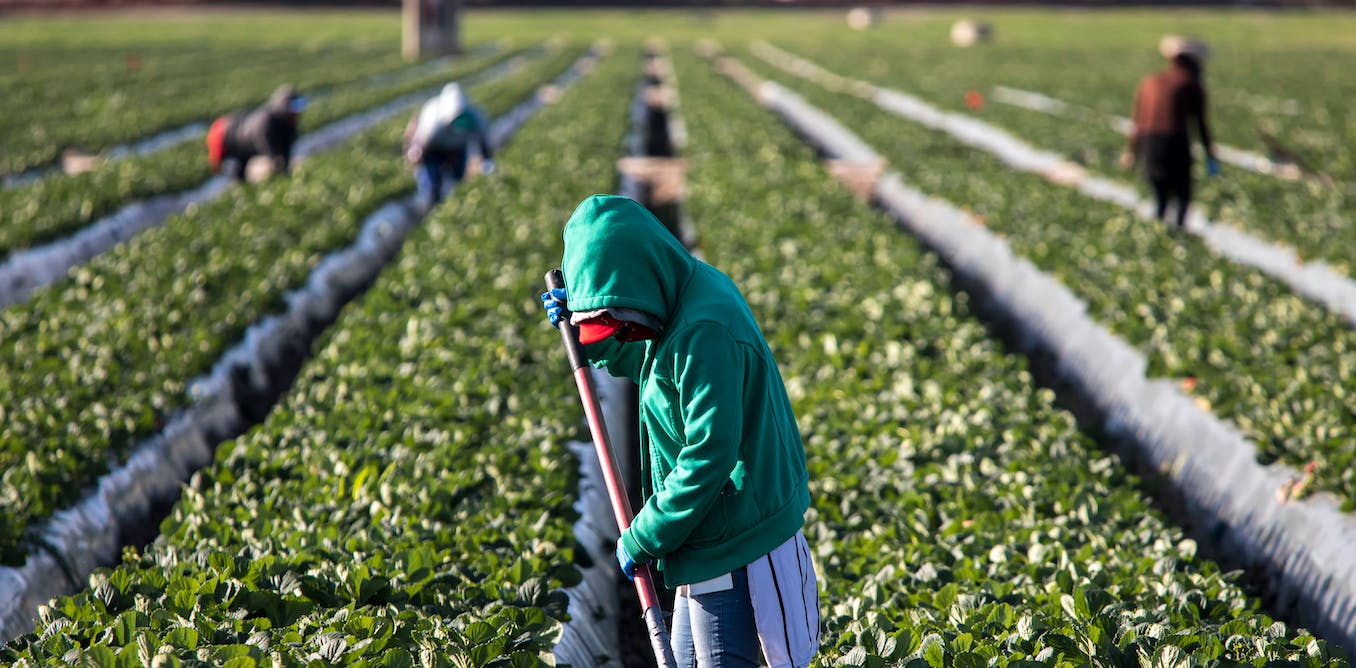Across Western Europe, and the rest of the Global North, migrants do an increasingly large share of agricultural work. Though the issues caused by this vary among countries, there are universal problems such as workers being paid lower salaries than promised, and substandard, overcrowded housing that lacks sanitation and basic services. Generally speaking, migrants work in the countryside, and do the hardest, most dangerous, or lowest paid tasks that the local population refuses to carry out.
This begs the question of what drives workers to accepts these jobs. Social research on the ground has revealed various motivations. Among them are wages that, although low, are often higher than those in a migrant worker’s place of origin. Agriculture is also rife with informal work, meaning it is often the only available source of employment for migrants without work permits.
In addition, certain structural disadvantages make it difficult for workers to protest and demand improvements. This can include isolation or lack of knowledge of local legislation and forms of organisation. It is also, in many cases, a result of their precarious migratory status, which limits their civil and political rights and means they are always at risk of being deported.
Companies in the sector take advantage of these forms of weakness. They have created an extremely lucrative economic model in collusion with the European states that have tolerated (if not encouraged) this structure in order to boost business and achieve food self sufficiency.
European food self-sufficiency
Agriculture is not just a fundamental pillar of any economy, but also of society as a whole. It feeds the population and, quite literally, sustains all human life. Its importance transcends the volume of business it generates: it is the primary sector from which any economic system grows.
A productive agricultural industry is not only the key to social wellbeing, it is also essential to guaranteeing food security. This was succinctly expressed by Oliver Wright, former head of the British Food and Drink Federation, in 2017 following the Brexit vote. In his words, “Food is at the heart of national security. If you can’t feed a country you haven’t got a country.”
Ensuring food security and production has been a priority for the European Union since its inception, and it launched the Common Agricultural Policy (CAP) for this purpose in 1962. This policy has proven itself throughout history, up to the present day when, despite rising inflation due to the war in Ukraine, the EU can still claim to be self-sufficient in terms of food.
How is production supported?
According to Eurostat data, 94.8 % of agricultural enterprises in the EU are family-owned, but these companies use only 17.6 % of the total cultivated area. The other 82.4 % is in the hands of much larger enterprises, classified as those with 20 or more hectares of land. Between 2005 and 2020 alone, 1.4 million family farms have disappeared.
The trend is clear: the bulk of European agricultural production is now in the hands of large cooperatives and companies. These are mainly based in Spain and Italy, which together produce 45% of the EU’s fresh fruit and vegetables. This concentration, which reveals the existence of a European division of labour, has been made possible by applying the framework of the factory production line to agriculture.
How is the work done?
Industrial agriculture is, essentially, mass production of food. Work is shifted away from small family businesses to become mainly salaried. Production times are reduced to the bare minimum and are measured in minute detail, and technology and agrochemicals are used extensively. Moreover, the majority of production takes place in the same geographic area, creating enclaves where the entire process – from planting to packaging and exporting the product – is concentrated.
A prime example of industrialised agriculture is the infamous “Sea of Plastic” in Almería in Southeastern Spain, which is even visible from space.
The emergence of this type of production, however, has clashed with the global trend towards rural depopulation. It raises the question of how such a dynamic sector could be created in areas characterised by ageing and declining populations.
Rights violations across Europe
The solution has come in the form of migrant labour. Farm workers today come primarily from nearby, less wealthy countries: North Africans, Romanians and sub-Saharan Africans in Italy; the same group plus Latin Americans in Spain; Albanians and South Asians in Greece; Romanians and other Eastern Europeans in Germany; Ukrainians in Poland, and so on.
In Spain, the agricultural enclave in the southwestern province of Huelva has made the headlines after the German press reported on labour and sexual exploitation of Moroccan seasonal workers. Since then, this and other problems in Huelva’s agricultural industry – such as the presence of shanty towns – have received more public attention.
Though this media awareness is positive, the problem is not isolated to one region. Rights violations have been recorded across Spain, from Almería to Murcia, Valencia and Lleida.
Similar situations occur across Europe, from Mafia-led exploitation of irregular migrants in Italy (known as caporalato) to Thai people getting into debt to find work picking fruit in Sweden. Similar situations can also be found in Greece, Germany, Poland and the Netherlands.
There may, however, be tentative steps towards change. The Greek government has just this week announced plans to grant residency permits to 30,000 migrant workers in an effort to address domestic labour shortages. Although the measure will make some workers less vulnerable, its main focus is safeguarding Greece’s national economy, not improving migrant rights: it will do nothing to address important problems like the lack of housing, nor will it improve the situation of other workers who continue arriving to work in Greek and European agriculture.
EU countries have built their agrifood industries on a foundation of exploiting migrant work. This workforce is absolutely essential for it to work as it does. The time has come for us as societies to take responsibility for these workers’ living conditions, prevent abuses, and ensure that they enjoy the same basic human rights as any other worker.
This article has been written in collaboration with Carlos Ruiz Ramírez, Oxfam Intermón’s project manager for the European SafeHabitus project.



